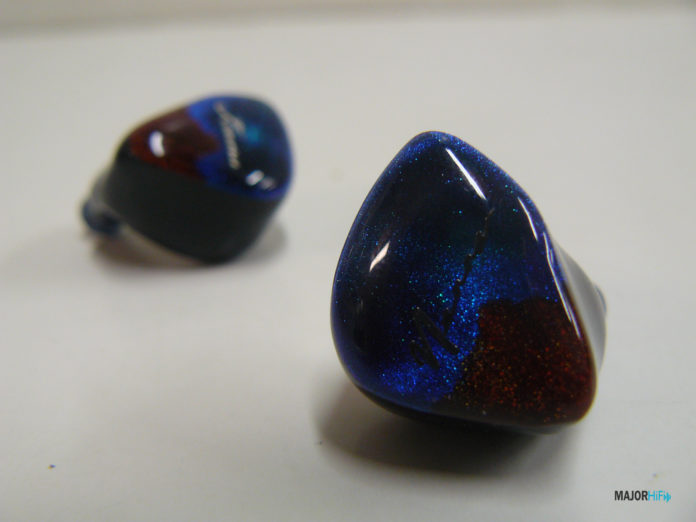I’ve been very vocal about my admiration for most of Kinera’s library of IEMs. Each new release has brought me a valuable in-ear experience from the BD005 to the Baldr. One of their most acclaimed models, the Nanna, is among my personal favorite IEMs out there. It has an expansive soundstage and a bass that’s smooth as butter.
It wasn’t too long ago that Kinera released an update to this esteemed earphone, giving you the same great sound in a brand new color scheme they branded “mount” (which quickly got branded as a “2.0” version by the internet). Now Kinera has given the Nanna a proper retuning and a complete repackaging with new accessories. They’ve kept the mount aesthetic and released this new version as the Kinera Imperial Nanna 2.0 Pro (unofficially sometimes called the Imperial Mount Nanna). Changing what was already a great product is hard to take on, so let’s get into what exactly this new Nanna brings to the table.
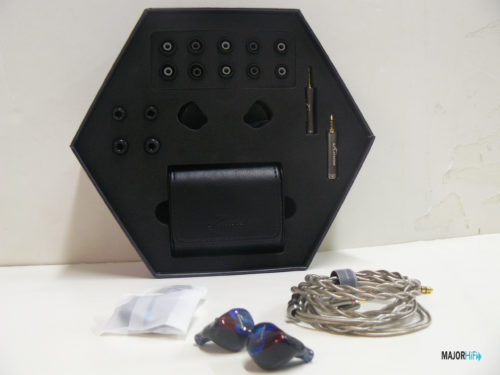
What You Get
There are quite a bit of new materials that come with the Imperial Nanna. The box is also redesigned to help you immediately differentiate it from the original two versions. One of the first items you’ll notice is the assortment of silicone and foam ear tips. You get a total of 5 pairs of silicone, and two pairs of foam. If you look in the nice leather case Kinera provides for you, you’ll also find two more sets of tips, three pairs each. A cleaning tool is also supplied here.
What makes this version of the Nanna so different is immediately seen in its cable and adapters. Kinera has opted to give the Imperial Nanna a 4.4mm balanced headphone connector as its main plug termination. It’s a surprising addition, and it also includes a 3.5mm and 2.5mm adapter as well. This is great not only as a unique cable type but also if you require those adapters for other cables with 4.4mm termination as well.
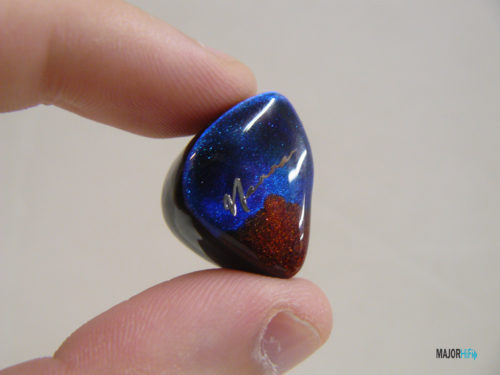
Look and Feel
When it comes to sheer artistry, no one beats Kinera. The original Nanna has a pretty swirl pattern, but the mount version is given a glittery new faceplate with a combination of blue, reddish-orange, and a tint of green. It’s given that signature shine with a resin coating to give the Nanna that gloss. The combined insignia just gives the Imperial Nanna such a classy aesthetic, while maintaining that beautiful artistry Kinera is known for. Their IEMs can’t just be nice to look at though, arguably the fit is even more important. Fortunately, Kinera also nails it in the comfort department as well. Although the housing seems to protrude out of your ear, the nozzle is just thick enough to provide proper security. This lets the ear tip do most of the work, giving you a good comfort level that never feels obtrusive.
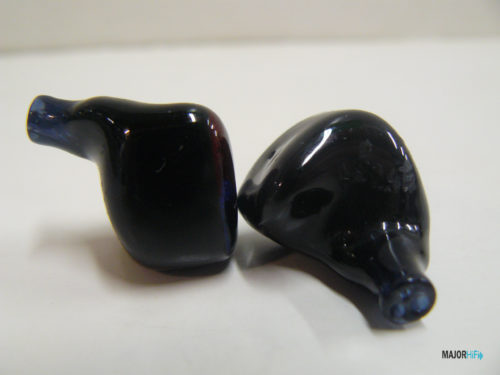
Design
Kinera uses a combination of units to complete a powerhouse driver system. This includes a 7mm dynamic driver, two Sonion electrostatic drivers, and a single balanced armature. Part of the Imperial Nanna’s hybrid construction aims to deliver differences in tuning from the original model. Kinera ensured reduced peakiness and a much smoother overall timbre.
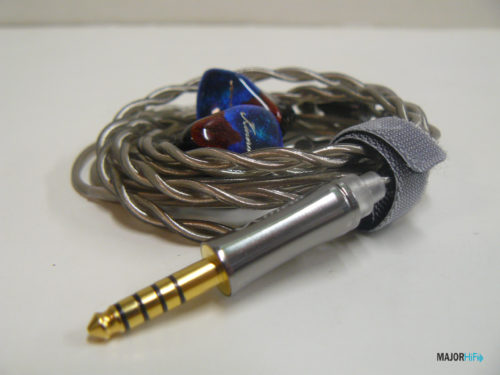
Output
I mainly tried to use the balanced 4.4mm connector as much as possible since Kinera wanted to spotlight it. I went with iFi Diablo for most of my listening, where I got some of the juiciest sound possible. The power of the signal here is strong and quick with the balanced connection, and it was hard to go back after experiencing such a massive sound. Although the Imperial Nanna sports such minimal resistance, it’s quite easy to control. It leaves a lot of space for gain and adjustable volume without dangerously blasting sound into your ears.
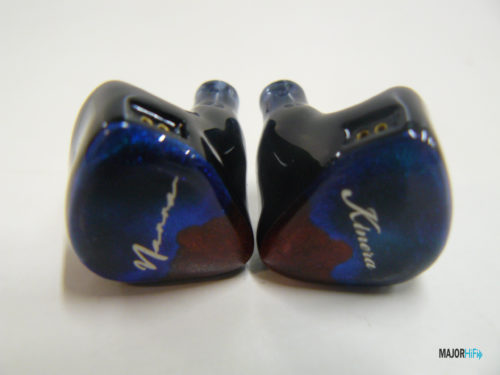
Soundstage
So just how different is the Imperial Nanna in terms of sound quality? The original model had a loose soundstage that used its natural imaging to express a high level of accuracy for an IEM. Now with the Imperial version, I felt that the soundstage was able to communicate a lot more spaciousness. I normally feel this way with some 4.4mm terminations, as the separation is definitely more felt, but on the Imperial Nanna, the positioning is especially defined. Kinera IEMs are no stranger to wide soundstages, and here the width is properly communicated without feeling stretched out or exaggerated.
Spatial imaging is kept roomy, still maintains a respectable level of accuracy. If you enjoyed the great depth of the previous Nanna, then this version will give you an even clearer sense of fullness and a semi-holographic effect. Instruments and effects get to play around in a slightly more floaty sound field, granting a superior sense of immersion compared to the original.
Low End
The lows in the last Nanna were smooth as butter, and though the Imperial version keeps some of those textural qualities there are some notable key differences. It sacrifices some of the former model’s thicker tonality for a more relaxed response. What’s not sacrificed is the high level of detail though, as the Imperial Nanna still exhibits some crisp tones. There’s a more effective presence of sub-bass here, but you don’t get a ton of texture until hitting the much warmer low-mids. The bass feel isn’t missing, but it might be a different timbre than you might be expecting.
Mids
One of my favorite aspects of the original Nanna was how wholly naturalistic the midrange was. The Imperial version keeps a lot of this name timbre but is slightly tuned more neutrally. Some of the more accentuated elements of the mids are reduced for a flatter response. However, this doesn’t cause the mids to become cold, as the low mids are warmed up while the high mids are smoothed out. Although it takes away some of the color of the mix, the detail stays, and it helps portray a more accurate frequency response.
Highs
I adored the high-frequency response of the previous Nanna. It has a sweet timbre that resonated with grace. This treble is a lot more smoothed out and balanced. It losses its sibilant qualities for a more easily digestible tonality. I preferred the original’s sporadic character, but the Imperial Nanna does a better job making the details easier to communicate. The smoother resonance will definitely help listeners better appreciate the level of fidelity even if I personally preferred the character of the original tuning.
Summary
There’s a lot to appreciate about the Imperial Nanna, its design, the aesthetic beauty, and most importantly the sound. Even though there are some minor tunning prospects a enjoyed more in the original, the Imperial still finds its place for people who may prefer a more easy-going sound signature. One that also doesn’t miss out on the detail. Its greatest improvement is its soundstage, which gripped me considerably more than the original. There are also the notable new accessories and new balanced termination which I enjoyed greatly. To me, it’s the proper way to experience these wonderful IEMs. Just make sure you have the right peripherals to use it.
As an upgrade, it’s debatable whether I’d go for these over the original. This is even more muddied considering the $949 hiked-up price point. I’d say I can take deal with the sacrifice of some textural quality for a more expansive soundstage, but some might not come to that conclusion. Whichever one you choose though, you’re still going to get one of the most satisfying IEMs out there.
Pros and Cons
Pros: Accessories, beautiful design, improved soundstage
Cons: Less textured
The Kinera Imperial Nanna 2.0 Pro is available at Audio 46.
Compare the ranking of various headphones, earbuds and in-ear monitors using our tools.
Discuss this, and much more, over on our forum.
---MAJORHIFI may receive commissions from retail offers.


